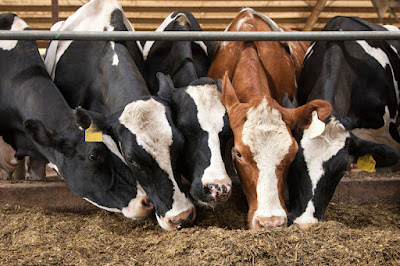How do I keep dairy cow feed costs down?
This is a common question amongst dairy producers. With feed costs representing as much as 70% of total production costs, it is not surprising that most are interested in learning about ways to spend less on feed. Of course, many variables factor into ration costs, including commodity values, market pricing and local availability. Variability, quality and palatability must also always be considered when evaluating diets, and it is critical to base your evaluation on income over feed costs (IOFC) — not just solely on feed costs. Spending a little more on feed costs can actually be more profitable if it means cows are milking better, rebreeding more quickly or are generally healthier. However, there are still several ways in which producers may reduce feed costs and maximize returns.
 |
| How to keep dairy cow feed costs down? |
What steps can I take to reduce dairy cow feed costs?
Re-examine your forage quality
Forage plays an important role in every cow's diet. Utilizing lower-digestible forages at higher inclusion rates will reduce milk production but including more high-quality forages can help to maintain rumen health, in addition to improving milk composition and production.
Group similar cows together and adjust their diets accordingly
When the same ration is fed to a large group of lactating cows, you may be overfeeding a significant percentage of your animals. Diets are typically formulated to provide sufficient nutrients to the most productive animals, which can result in overfeeding less productive individuals due to inefficient nutrient utilization. Dividing lactating cows into smaller groups and offering them specific feeding rations allows for more precise nutrition, increases income over feed cost and decreases environmental nutrient excretion.
Shrink feed losses
Even a seemingly small shrink correction can have a big impact on your bottom line. The first step is identifying where shrink is happening. Whether caused by environmental factors, such as wind, rodents or birds, or other variables, such as spillage or spoilage, shrink is wasteful. Any reduction in feed waste makes a big difference. You can also take steps to minimize shrink by measuring dry matter intake and ensuring that loading accuracy, proper mixing, timing and feed bunk maintenance are taking place.
